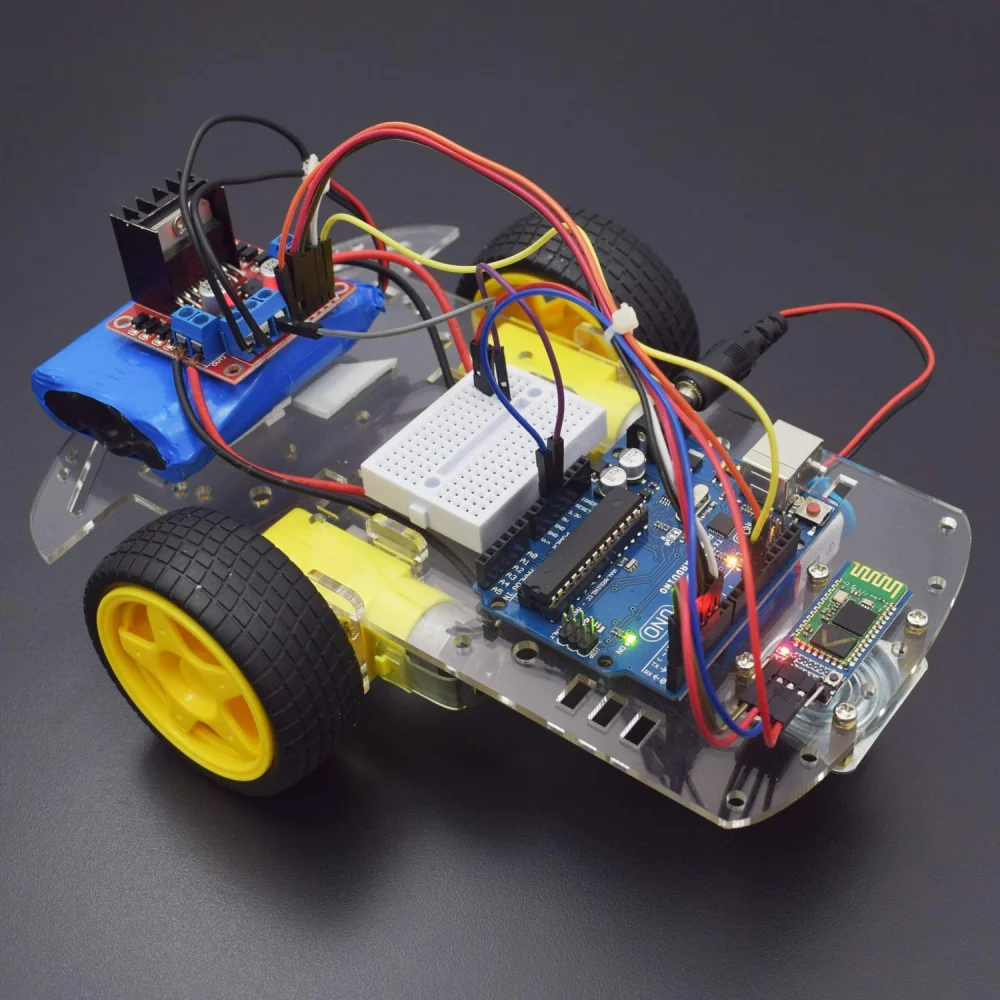Robotics Lab
Innovating the Future of Automation

Dive into robotics at Anagh Technology’s Robotics Lab, where students explore robotics with beginner to advanced kits. From building path followers and obstacle-avoiding robots to hands-on no-code and coding learning, the lab offers a strong foundation in robotics. Students progress from non-coding to block-based and advanced coding, preparing them for the future of automation.

What Makes Our Robotics Lab Special?

Non-Coding Robotics: Unlocking Fundamentals
- Hands-On Learning: Start with easy-to-build robots, such as path followers and obstacle-avoiding bots, using basic components and circuit connections.
- Understanding the Core Principles: Learn the fundamentals of robotics like sensors, actuators, and motor control, with no coding required.
- Build, Test & Innovate: Use simple tools and kits to explore robotic concepts and problem-solving, giving you a foundation in robotics without the need for programming.
- Focus on Mechanical & Electrical Engineering: Understand how robots function mechanically and electrically before diving into the complexity of coding.
- Interactive Learning: Emphasis on collaborative projects where students work together to solve real-world challenges, fostering teamwork and critical thinking.

Block-Based Coding Robotics: Bridging the Gap
- Visual Programming for Beginners: Learn to program robots using block-based coding platforms, such as Micro:bit or Scratch, that let students manipulate code visually, making it easy to grasp.
- From Logic to Action: Use simple drag-and-drop blocks to create logic and program robot movements, sensors, and functions.
- Explore Automation: Apply block-based coding to make robots respond to real-world inputs, such as navigating obstacles, following paths, or even responding to light and sound.
- Develop Problem-Solving Skills: As students progress, they can tackle more complex challenges by combining coding logic with hands-on robotics activities.
- Foundational Coding Skills: Block-based coding helps students develop an understanding of logic, sequencing, and algorithm development without writing complex code.
Block-Based Coding Robotics: Bridging the Gap
- Visual Programming for Beginners: Learn to program robots using block-based coding platforms, such as Micro:bit or Scratch, that let students manipulate code visually, making it easy to grasp.
- From Logic to Action: Use simple drag-and-drop blocks to create logic and program robot movements, sensors, and functions.
- Explore Automation: Apply block-based coding to make robots respond to real-world inputs, such as navigating obstacles, following paths, or even responding to light and sound.
- Develop Problem-Solving Skills: As students progress, they can tackle more complex challenges by combining coding logic with hands-on robotics activities.
- Foundational Coding Skills: Block-based coding helps students develop an understanding of logic, sequencing, and algorithm development without writing complex code.


Advanced Coding Robotics: The Next Step
- Transition to Text-Based Coding: Once students feel confident with block-based coding, they can transition into text-based languages like Python or C++ to program robots with greater precision and flexibility.
- Real-World Applications: Explore how advanced coding can automate tasks, enhance robot functionality, and even integrate artificial intelligence.
Our Robotics Lab is designed to provide a strong foundation in robotics through non-coding activities, followed by an introduction to block-based coding and, eventually, text-based programming. This structured approach makes the lab suitable for students at any stage of their learning journey, ensuring they develop both the hands-on skills and coding knowledge necessary for the future of robotics. Whether you’re building robots, solving problems, or writing code, this lab is where creativity and innovation come to life! 🤖